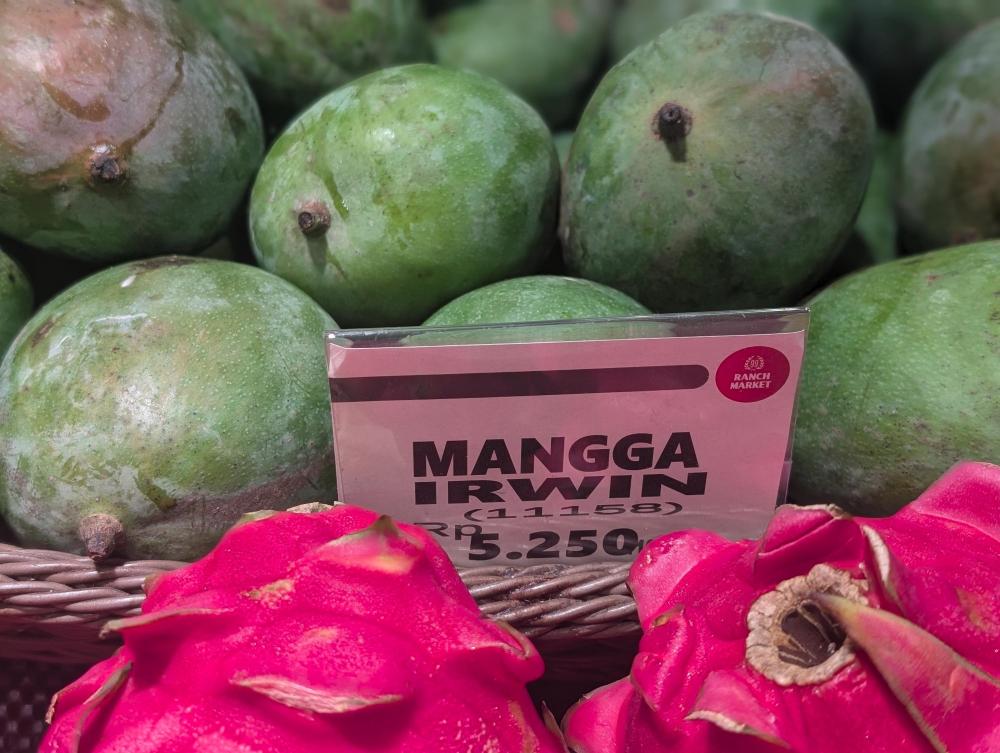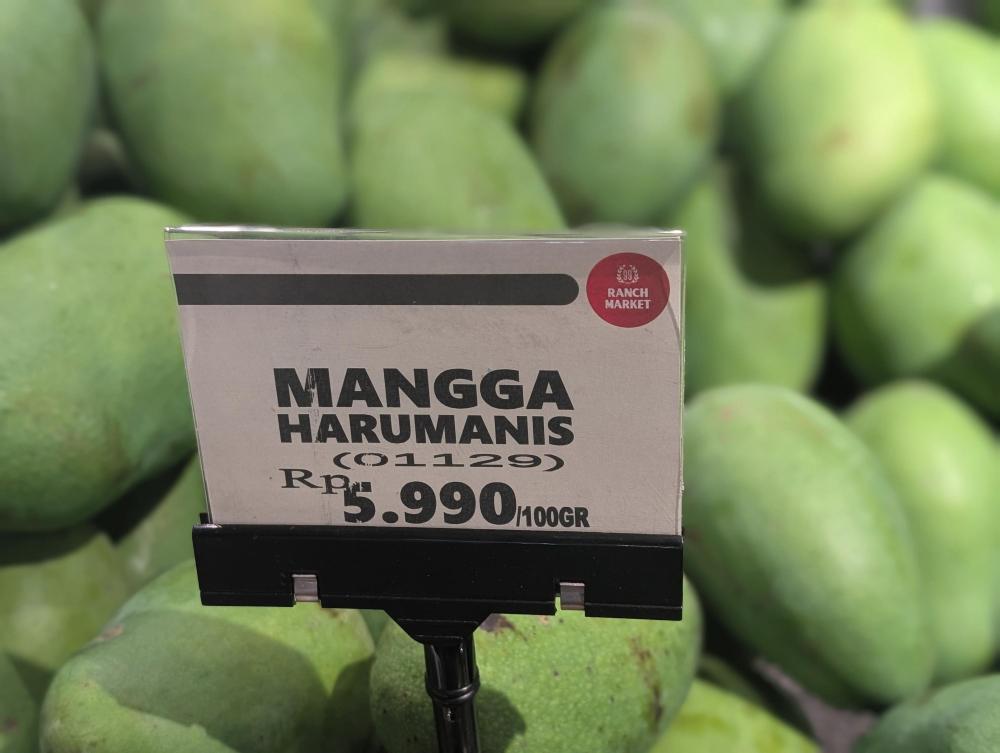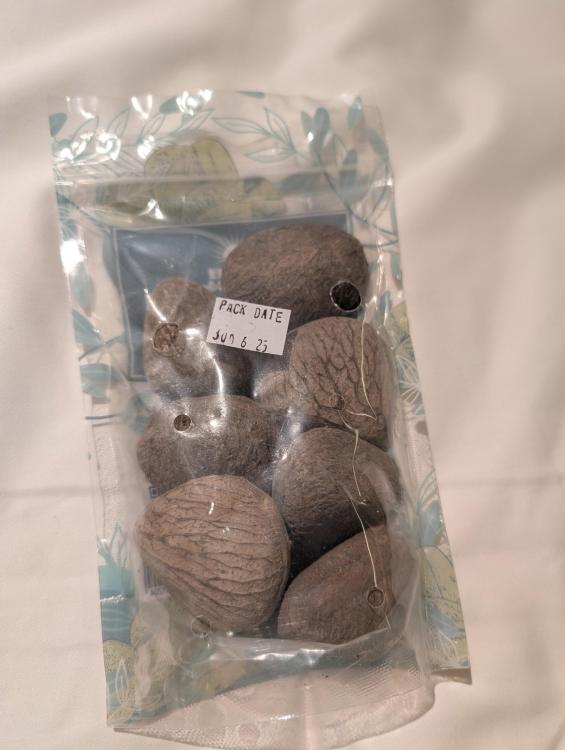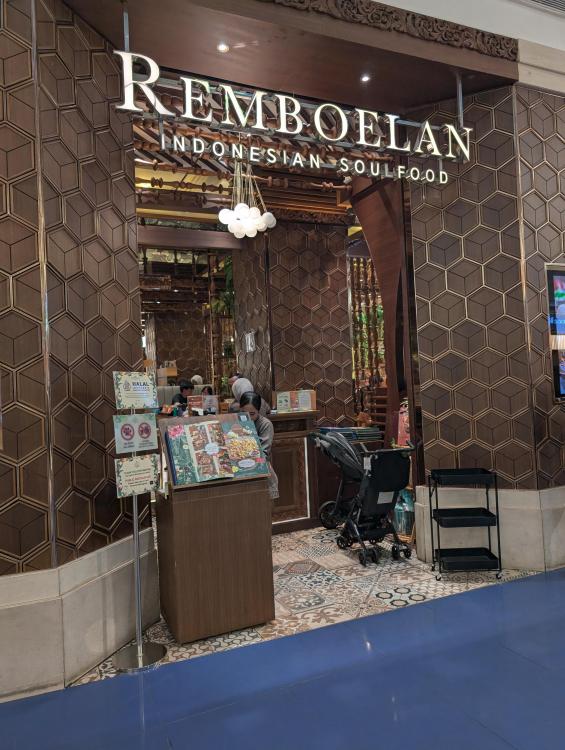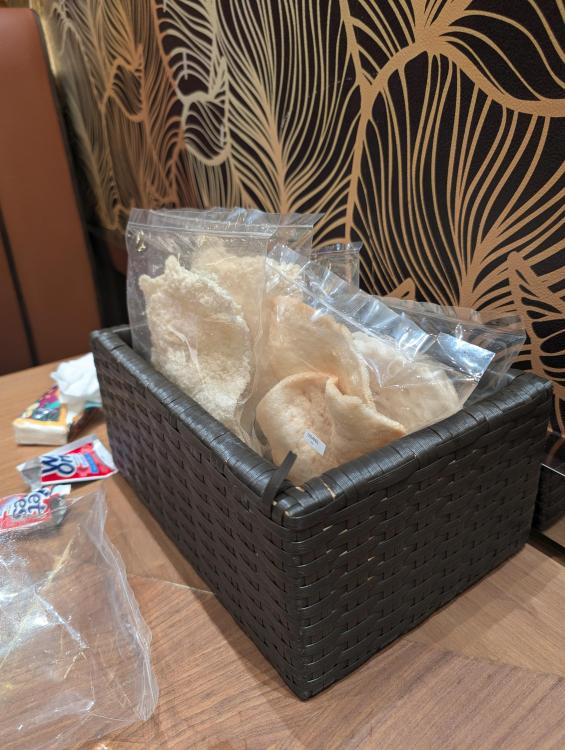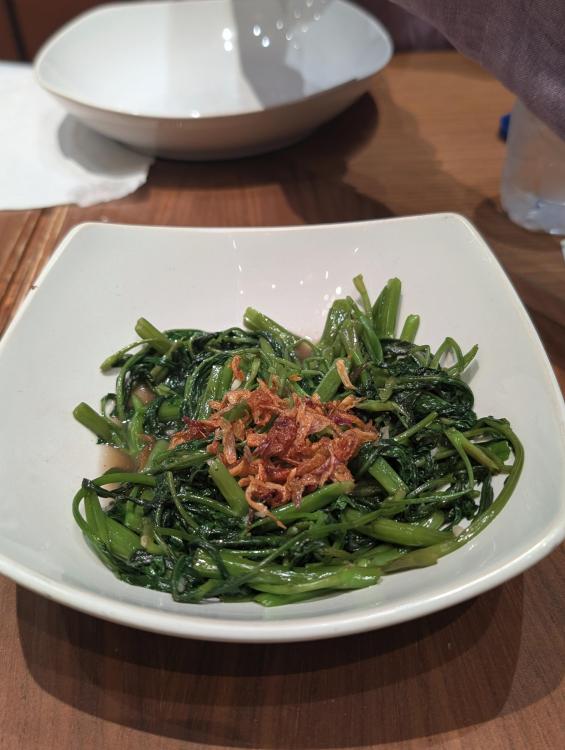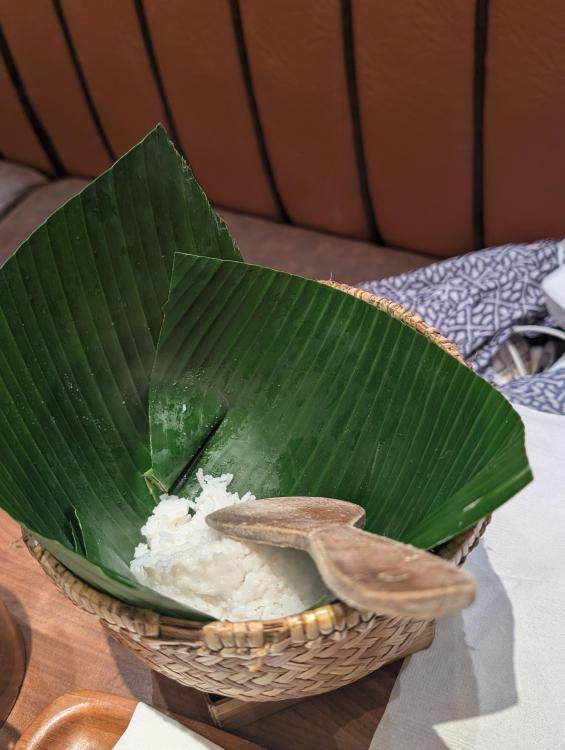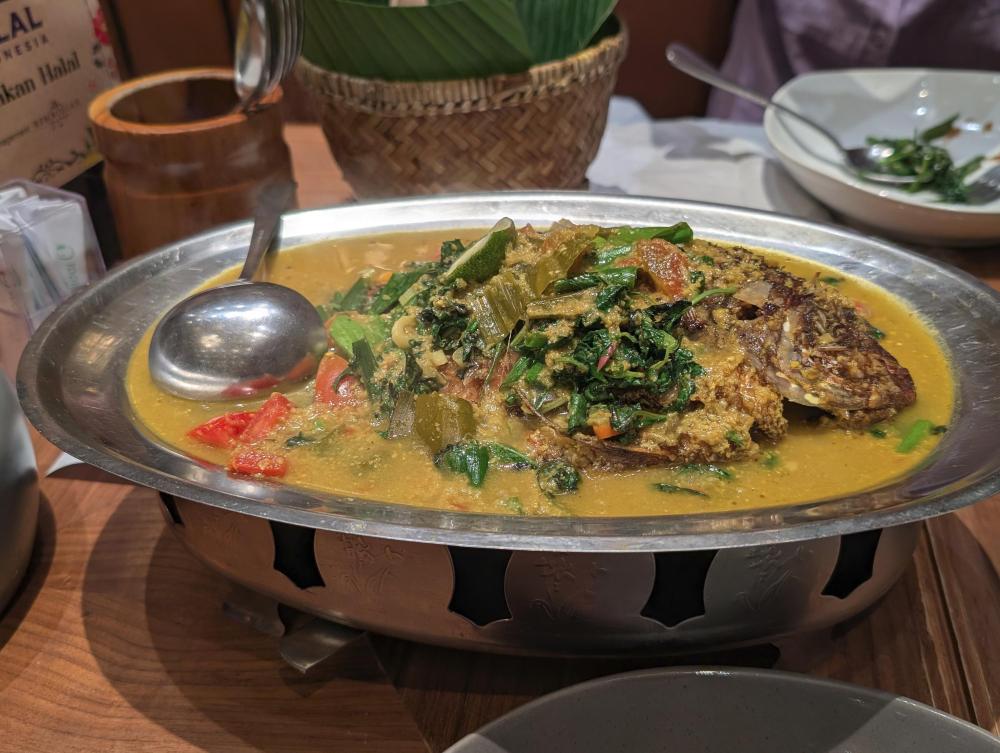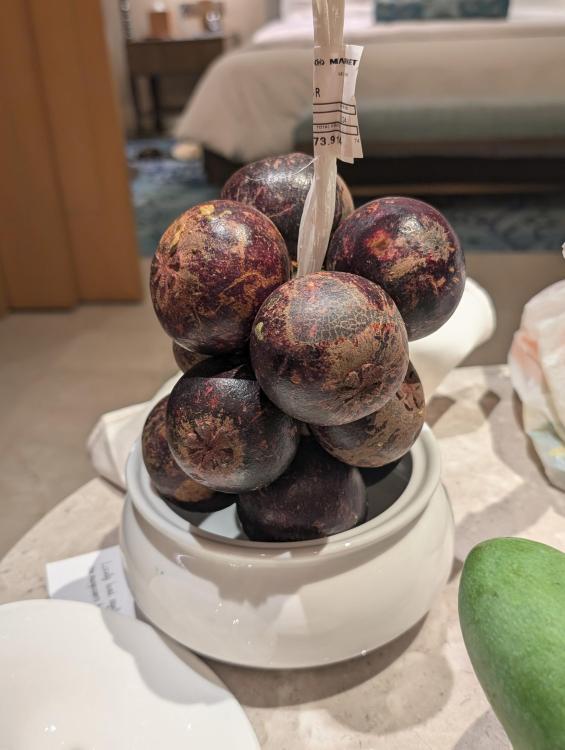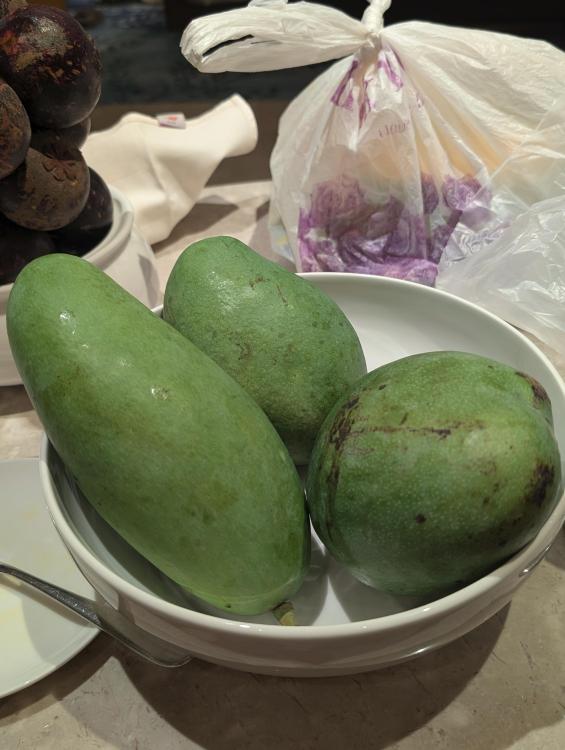We were still getting tired pretty early, so we decided to have dinner at a good looking Indonesian restaurant in the mall.... but before then, we stopped at the supermarket for more mangoes for the room:
These are Kluwek (aka keluak, aka kluwak) - black nuts. For scale, each nut is about 2 inches or so across. They are hard as rocks - you need to hit them with a hammer to open them! Inside, the meat is oily and is like a smooth paste. In Indonesia, it's commonly used in a dish from East Java called Rawon, which is like a soup - we had it last time here. In Peranakan Singapore/Malaysian food, it's used in a few dishes, but one that I like to make at home a lot is called ayam buah keluak (buah keluak is the name of the nut) - typically, to cook, you scoop out the meat, season with salt and a little sugar, sometimes mix with ground pork, and stuff back into the shell then cook in the sauce with the chicken. The flavor of keluak is really hard to describe - it is chocolately, earthy, but also has a fermented almost alcoholic quality to it as the nut is actually fermented! When first harvested, the nuts have cyanide inside and must be treated in a lengthy process in order to be edible. It is first roasted, and then buried in the ashes for about a month (hence the fermentation). It is then cleaned and ready for sale. In order to use at home, it is typically soaked in water for 5 days or so, changing the water every day - only then is it ready to be cracked open. A lot of work, but sooo worth it.
The restaurant for dinner:
The menu was exhaustive!!! I think they tried to have dishes from almost every region in Indonesia!!!
Every table has a basket of crackers (krupuk). We took some shrimp crackers - really shrimpy.
Stir fried kangkong (water spinach)
White rice
Chicken with sambal penyet - the chicken is marinated, then boiled, then fried and then smashed in a mortar with the sambal made from chillies, shallot, garlic, tomato, etc.
Whole fish (I don't remember what type, but it was meaty with no small bones) in sauce Woku, from Manado which is in North Sulawesi. We will be heading to that area soon for some diving, but we'll be staying at a hotel on a small island, and the food there is certainly Westernized so I thought this would be a good time to have it in a way made more for locals. We also had it a few times when in Manado previously a couple years ago - you can see it here, but scroll down a bit. The spice paste is made from shallots, galangal, garlic, turmeric, etc. but also is made with a bunch of sliced herbs like pandan, turmeric leaf and Thai basil.
Once we got back to the hotel room, we set up our supermarket haul:
Mangosteen.... my favorite!!!


